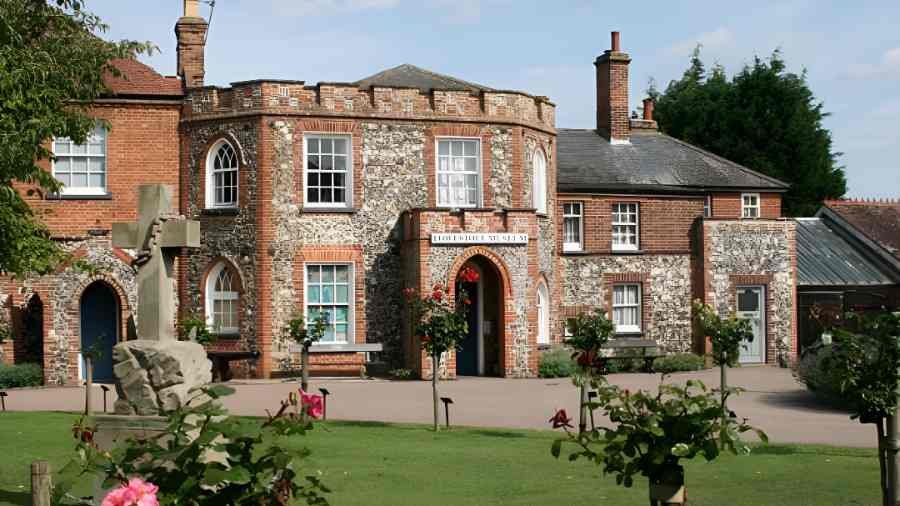Lowestoft Museum: A Journey Through Suffolk’s Heritage and Hidden Stories

Among the quiet parkland of Oulton Broad, within the historic walls of Broad House, rests one of Suffolk’s most charming cultural treasures: Lowestoft Museum. Though modest in size, it is rich in history, detail, and local pride. The museum captures the story of Lowestoft and its surrounding regions, from ancient human settlement and early fishing communities to Victorian life and the celebrated Lowestoft Porcelain industry. For history lovers, families, researchers, tourists and locals seeking to reconnect with their town’s roots, Lowestoft Museum offers a rare and rewarding experience.
The Location and Historic Setting
Lowestoft Museum is located in Oulton Broad, one of the most picturesque areas in the eastern region of Suffolk. Its home, Broad House, is a Grade II listed building dating back to the late 17th century. Surrounded by the greenery of Nicholas Everitt Park and close to the water’s edge, the setting enhances the museum’s peaceful and reflective atmosphere.
The building itself tells a story. Constructed originally as a private house, it later became part of the local community’s cultural heritage. Its timber framing, period windows and preserved architectural details make it an example of historic domestic architecture in Suffolk. The structure offers a fitting backdrop to the museum’s exhibits, reinforcing the message that history is not only discovered through artefacts but also through the spaces we preserve.
Origins and Purpose of Lowestoft Museum
Lowestoft Museum is a volunteer-run institution, created to preserve the history and cultural heritage of Lowestoft and its neighbouring regions. It stands as a testament to local dedication, community care, and the belief that history should be accessible to everyone.
The museum aims to:
- Protect important historical artefacts found in and around Lowestoft.
- Educate visitors about local industries, daily life, and historical development.
- Preserve specialist objects, such as the celebrated Lowestoft Porcelain.
- Provide families and young learners with engaging, tactile learning experiences.
Because entry is free, and staffed by volunteers, the museum is also an example of how community-led heritage organisations continue to play an important role in preserving the past, especially in smaller towns.
The Lowestoft Porcelain Collection
One of the most important features of Lowestoft Museum is its impressive collection of Lowestoft Porcelain. Produced between 1757 and 1802, Lowestoft Porcelain is highly regarded among collectors and historians for its craftsmanship, rarity and delicate hand-painted designs.
What makes Lowestoft Porcelain unique is that it originated from one of the earliest porcelain factories in Britain. The pieces often display:
- Fine blue and white floral patterns
- Coastal design influences
- Personalised family initials or decorative motifs
- Everyday household forms such as teapots, cups and bowls
The collection preserved in the museum allows visitors to see original pieces that were once used in the homes of local families. Some ceramics were even found buried, discarded or recovered through archaeological digs, adding further layers of story to their presentation.
Prehistoric and Archaeological Treasures
Long before Lowestoft was a fishing town, it was home to some of the earliest known humans in Britain. A significant display in the museum relates to the discovery of “Pakefield Man,” evidence of hominin presence in the area nearly 700,000 years ago. These findings make the Lowestoft region one of the oldest recorded sites of human activity in northern Europe.
The museum showcases:
- Fossils from prehistoric marine environments
- Stone tools used by early humans
- Roman pottery and household objects discovered through excavation
- Anglo-Saxon ornaments and settlement items
These items help visitors trace the region’s transformation from wild landscape to thriving community.
Maritime and Fishing Heritage
For centuries, the sea shaped the life and identity of Lowestoft. It influenced employment, social structure, architecture, trade and even local celebrations. The museum carefully displays items connected to the coastal and fishing industries that made Lowestoft nationally and internationally known.
Visitors learn about:
- The daily life of fishermen and their families
- The role of fishing trawlers in local economy
- Traditional net-making, boat building and fish curing practices
- Memories of life in seaside communities
There are also scale models and artefacts from famous ships, as well as personal belongings donated by families who lived and worked along the shoreline.
Social and Domestic History Exhibits
Lowestoft Museum also recreates the experience of daily life across the centuries. Rooms and displays are arranged with objects from local homes, workshops and schools.
Exhibits include:
- A Victorian parlour, complete with furnishings and household tools
- A cobbler’s workshop showing how shoes were handcrafted
- A doctor’s surgery with early medical instruments
- A classroom corner featuring childhood toys and early school materials
These displays help visitors imagine how ordinary people lived, worked, learned and interacted in different time periods.
The Role of Volunteers and Community Support
One of the museum’s defining strengths is its volunteer team. Passionate local residents contribute their time to:
- Curate displays
- Restore artefacts
- Conduct research
- Guide visitors
- Maintain the building and archives
Their efforts ensure that the museum thrives not just as a place of history, but as a living part of the community.
Educational Value and Family Appeal
Lowestoft Museum is suitable for all ages. Children in particular benefit from:
- Hands-on displays
- Simplified explanatory notes
- Visual storytelling exhibits
- The ability to explore rooms that look like scenes from the past
Schools often arrange visits to complement lessons on archaeology, the Victorians, or English regional history.
Visiting Lowestoft Museum
The museum is easy to reach within Oulton Broad, set within a peaceful park. The green surroundings provide spaces to relax before or after exploring the museum. The experience is relaxed, gentle, and slow-paced, allowing visitors to observe details at their own rhythm.
Although the building is historic, and therefore limited in some forms of accessibility, volunteers are always willing to assist where possible.
Conclusion
Lowestoft Museum is more than a collection of objects; it is a living memory of a town’s identity, culture and journey through time. From rare porcelain and ancient human tools to fishing histories and Victorian homes, the museum offers insight into how people lived, worked and evolved in this coastal region of Suffolk. It preserves personal stories, community legacy and historical depth that might otherwise be forgotten.
For visitors seeking to understand Lowestoft not only as a seaside town but as a place with rich human heritage, Lowestoft Museum stands as a quietly remarkable destination. Whether you are a tourist, a local resident, a researcher or a family seeking an educational day out, the museum provides a meaningful and engaging experience that highlights the value of preserving and celebrating local history.



